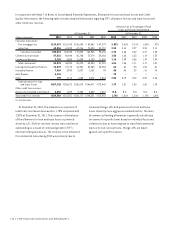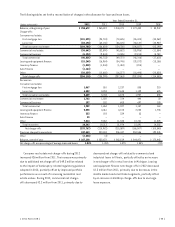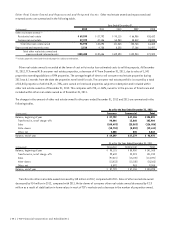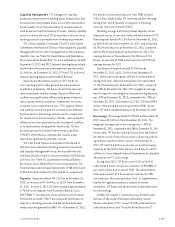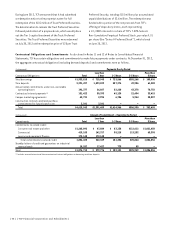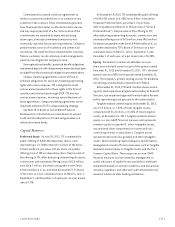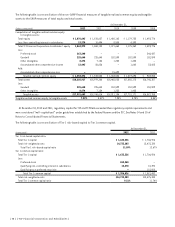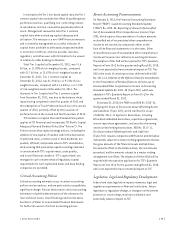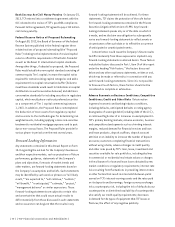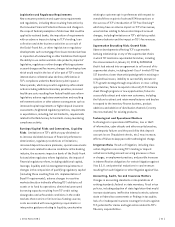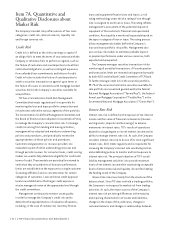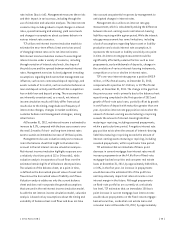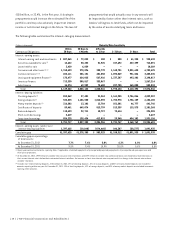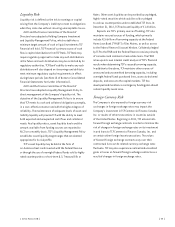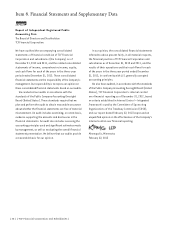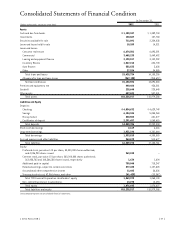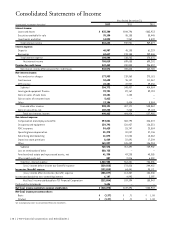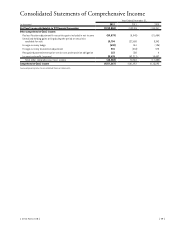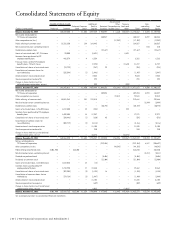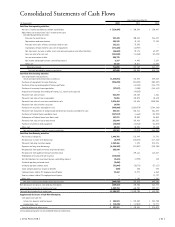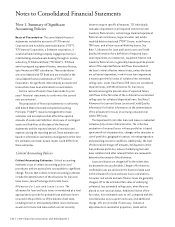TCF Bank 2012 Annual Report Download - page 68
Download and view the complete annual report
Please find page 68 of the 2012 TCF Bank annual report below. You can navigate through the pages in the report by either clicking on the pages listed below, or by using the keyword search tool below to find specific information within the annual report.Item 7A. Quantitative and
Qualitative Disclosures about
Market Risk
The Company’s market risk profile consists of four main
categories: credit risk, interest rate risk, liquidity risk
and foreign currency risk.
Credit Risk
Credit risk is defined as the risk to earnings or capital if
an obligor fails to meet the terms of any contract with the
Company or otherwise fails to perform as agreed, such as
the failure of customers and counterparties to meet their
contractual obligations, as well as contingent exposures
from unfunded loan commitments and letters of credit.
Credit risk also includes the failure of counterparties to
settle a securities transaction on agreed-upon terms or
the failure of issuers in connection with mortgage-backed
securities held in the Company’s securities available for
sale portfolio.
TCF has a Concentration Credit Risk Management
Committee that meets regularly and is responsible for
monitoring the loan and lease portfolio composition and
risk tolerance within the various segments of the portfolio.
The Concentration Credit Risk Management Committee and
the Board of Directors have adopted a Concentration Policy
to manage the Company’s concentration risk. To manage
credit risk arising from lending and leasing activities,
management has adopted and maintains underwriting
policies and procedures, and periodically reviews the
appropriateness of these policies and procedures.
Customers and guarantors or recourse providers are
evaluated as part of initial underwriting processes and
through periodic reviews. For consumer loans, credit scoring
models are used to help determine eligibility for credit and
terms of credit. These models are periodically reviewed to
verify that they are predictive of borrower performance.
Limits are established on the exposure to a single customer
(including affiliates) and on concentrations for certain
categories of customers. Loan and lease credit approval
levels are established so that larger credit exposures
receive managerial review at the appropriate level through
the credit committees.
Management continuously monitors asset quality
in order to manage the Company’s credit risk and to
determine the appropriateness of valuation allowances,
including, in the case of commercial, inventory finance
loans and equipment finance loans and leases, a risk
rating methodology under which a rating of one through
nine is assigned to each loan or lease. The rating reflects
management’s assessment of the potential impact on
repayment of the customer’s financial and operational
condition. Asset quality is monitored separately based on
the type or category of loan or lease. The rating process
allows management to better define the Company’s
loan and lease portfolio risk profile. Management also
uses various risk models to estimate probable impact
on payment performance under various scenarios, both
expected and unexpected.
The Company manages securities transaction risk by
monitoring all unsettled transactions. All counterparties
and transaction limits are reviewed and approved annually
by both ALCO and the Bank Credit Committee of TCF Bank.
To further manage credit risk in the securities portfolio,
99.7% of the securities held in the securities available for
sale portfolio are issued and guaranteed by the Federal
National Mortgage Association (“Fannie Mae”), the Federal
Home Loan Mortgage Corporation (“Freddie Mac”) or the
Government National Mortgage Association (“Ginnie Mae”).
Interest Rate Risk
Interest rate risk is defined as the exposure of net interest
income and fair value of financial instruments (interest-
earning assets, deposits and borrowings) to adverse
movements in interest rates. TCF’s results of operations
depend to a large degree on its net interest income and its
ability to manage interest rate risk. As such, the Company
considers interest rate risk to be one of its most significant
market risks. ALCO meets regularly and is responsible for
reviewing the Company’s interest rate sensitivity position
and establishing policies to monitor and limit exposure to
interest rate risk. The principal objective of TCF’s asset/
liability management activities is to provide maximum
levels of net interest income while maintaining acceptable
levels of interest rate risk and liquidity risk and facilitating
the funding needs of the Company.
Interest rate risk arises mainly from the structure of the
balance sheet. Since TCF does not hold a trading portfolio,
the Company is not exposed to market risk from trading
activities. As such, the major sources of the Company’s
interest rate risk are timing differences in the maturity
and repricing characteristics of assets and liabilities,
changes in the shape of the yield curve, changes in
customer behavior and changes in relationships between
{ 52 } { TCF Financial Corporation and Subsidiaries }


